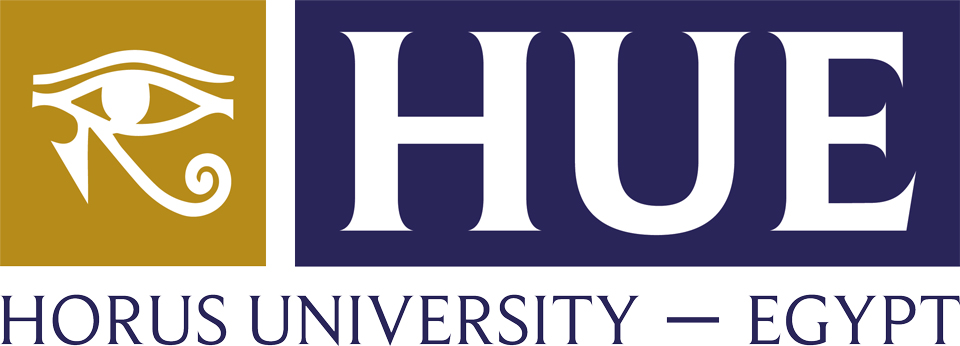Pharmacognosy Department
Plants Farm - Faculty of Pharmacy, Horus University
The Plants Farm at the Faculty of Pharmacy, Horus University, is one of the significant research and educational projects contributing to the study of pharmacognosy. The farm hosts a variety of medicinal plants, each with unique pharmacological activities.
Farm Contents: The farm includes many medicinal plants, such as:
- Geranium: Known for its anti-inflammatory and antioxidant properties.
- Guava: Leaves are used to treat coughs and colds and have antimicrobial properties.
- Clove: Contains eugenol, which acts as a pain reliever and antibacterial agent.
- Hibiscus: Known for its ability to lower blood pressure and improve heart health.
- Eucalyptus: Used as an expectorant and anti-inflammatory for respiratory conditions.
- Digitalis: Source of digoxin, used in the treatment of congestive heart failure.
And many more medicinal plants contributing to the development of pharmaceutical research and studies.
The Plants Farm plays a crucial role in enhancing scientific research, providing hands-on learning experiences for students in the Faculty of Pharmacy, and supplying natural materials for pharmaceutical research.
The farm is not merely a place for cultivation; it is a living laboratory that contributes to advancing scientific knowledge and discovering new drugs by utilizing the medicinal properties of diverse plants.
Medicinal Plants at the Medicinal Plants Farm
- Digitalis
- Scientific Name: Digitalis lanata
- Family: Scrophulariaceae
- Active Ingredients: Contains several active compounds including cardiac glycosides (cardinolides): Lanatoside A, B, C, D, E
- Medical Uses:
- Regulates heart rhythms
- Treats chronic heart failure
- Accelerates blood circulation
- This plant is considered toxic and is used only in pharmaceutical preparations under medical supervision
- Belladonna (Deadly Nightshade)
- Scientific Name: Atropa belladonna
- Family: Solanaceae
- Active Ingredients: Atropine, hyoscine
- Medical Uses:
- Atropine dilates the pupils
- Hyoscine is used to treat cramps
- Local anesthesia
- Affects cough
- Datura
- Scientific Name: Datura stramonium
- Family: Solanaceae
- Active Ingredients: Atropine, Hyoscine, Hyoscyamine
- Medical Uses:
- Atropine dilates the pupils
- Hyoscine is used to treat cramps
- Local anesthesia
- Affects cough
- Egyptian Henbane
- Scientific Name: Hyoscyamus muticus
- Family: Solanaceae
- Active Ingredients: Atropine, Scopolamine, Hyoscine, Hyoscyamine
- Medical Uses:
- Atropine dilates the pupils
- Hyoscine is used to treat cramps
- Local anesthesia
- Relieves cough
- Rosemary (Frankincense)
- Scientific Name: Rosmarinus officinalis
- Family: Lamiaceae
- Active Ingredients: Volatile oil, Flavonoids, Catechol tannin
- Medical Uses:
- Its aroma helps improve concentration
- Boosts the immune system and improves blood circulation
- Treats digestive disorders such as indigestion, constipation, stomach cramps, and bloating (carminative)
- Carminative, diuretic, rubefacient, rheumatic pain, antimicrobial
- Peppermint
- Scientific Name: Mentha piperita
- Family: Lamiaceae
- Active Ingredients: Volatile oil (menthone and menthyl acetate), Flavonoids, Catechol tannin
- Medical Uses:
- Treats irritable bowel syndrome symptoms such as abdominal pain, bloating, and gas
- Helps calm nerves
- Relieves esophageal spasms
- Relieves rheumatic pain, flavoring agent
- Marigold
- Scientific Name: Calendula officinalis
- Family: Compositae
- Active Ingredients: High amount of antioxidants, volatile oil, gum materials (Calendulin)
- Medical Uses:
- Treats bruises
- Chamomile
- Scientific Name: Matricaria chamomilla
- Family: Compositae
- Active Ingredients: Antioxidants, Flavonoids, Essential oils (azulene, chamazulene), Volatile oil
- Medical Uses:
- Calms nerves and treats insomnia
- Treats digestive disorders such as diarrhea, cramps, and irritable bowel syndrome
- Anti-inflammatory, emmenagogue, diaphoretic, asthma
- Flaxseed
- Scientific Name: Linum usitatissimum
- Family: Linaceae
- Active Ingredients: Tannin, fatty acids, protein, starch, fixed oil, Linamarin, mucilage, omega-3 fatty acids
- Medical Uses:
- Source of nutrients including vitamins and minerals
- Reduces cholesterol levels and heart disease
- Source of antioxidants
- Source of anti-inflammatory compounds
- Improves conditions in diabetic patients
- Anise
- Scientific Name: Pimpinella anisum
- Family: Umbelliferae
- Active Ingredients: Volatile oil (Anethol 90%), fixed oil, protein
- Medical Uses:
- Treats cough
- Treats digestive problems such as colitis and constipation
- Antiflatulent
- Coriander
- Scientific Name: Coriandrum sativum
- Family: Umbelliferae
- Active Ingredients: Volatile oil (linalool, pinene)
- Medical Uses:
- Contains antioxidants
- Fungicidal
- Bactericidal
- Fenugreek
- Scientific Name: Trigonella foenum-graecum
- Family: Fabaceae
- Active Ingredients: Protein, fixed oil, saponin, and two alkaloids (trigonelline and choline)
- Medical Uses:
- Helps control blood sugar levels
- Reduces heartburn symptoms
- Lowers cholesterol levels
- Good source of minerals and vitamins
- Increases milk production during breastfeeding and stimulates appetite
- Fennel
- Scientific Name: Foeniculum vulgare
- Family: Umbelliferae
- Active Ingredients: Volatile oils (Anethole 90%), fixed oil, protein
- Medical Uses:
- Reduces colic in infants
- Relieves abdominal pain
- Alleviates cramps and spasms
- Black Mustard
- Scientific Name: Brassica nigra
- Family: Brassicaceae
- Active Ingredients: Fixed oil, protein, sinigrin glycoside, myrosin enzyme
- Medical Uses:
- Rubefacient, counterirritant, emetic
- Hibiscus
- Scientific Name: Hibiscus sabdariffa
- Family: Malvaceae
- Active Ingredients: Organic acids, Flavonoids (Hibiscetin)
- Medical Uses:
- Contains beneficial compounds such as ascorbic acid, a source of vitamin C
- Helps lower high blood pressure
- Aids in weight loss
- Emollient, diuretic, laxative, sedative, for flu, cold, and cough
Department Head Prof. Dr. Amal Abd-Elhamid Hassan Galala

welcome everybody who participates in building a future for our own country to help it take a considerably distinctive place among nations.

